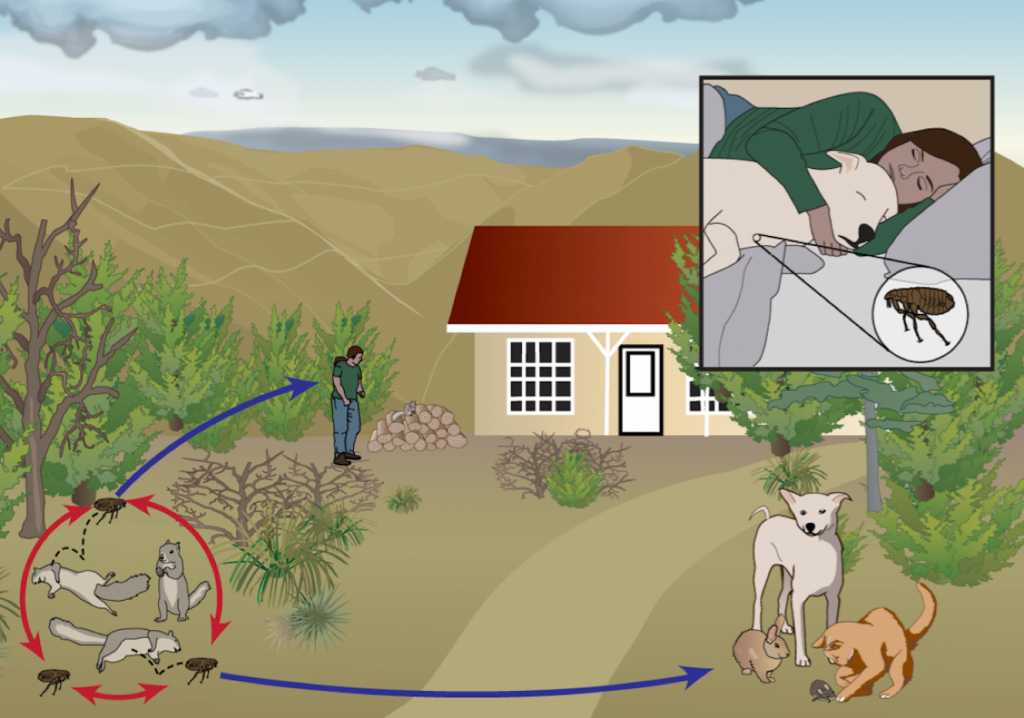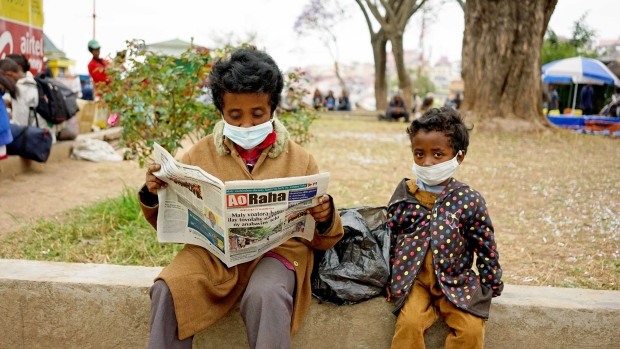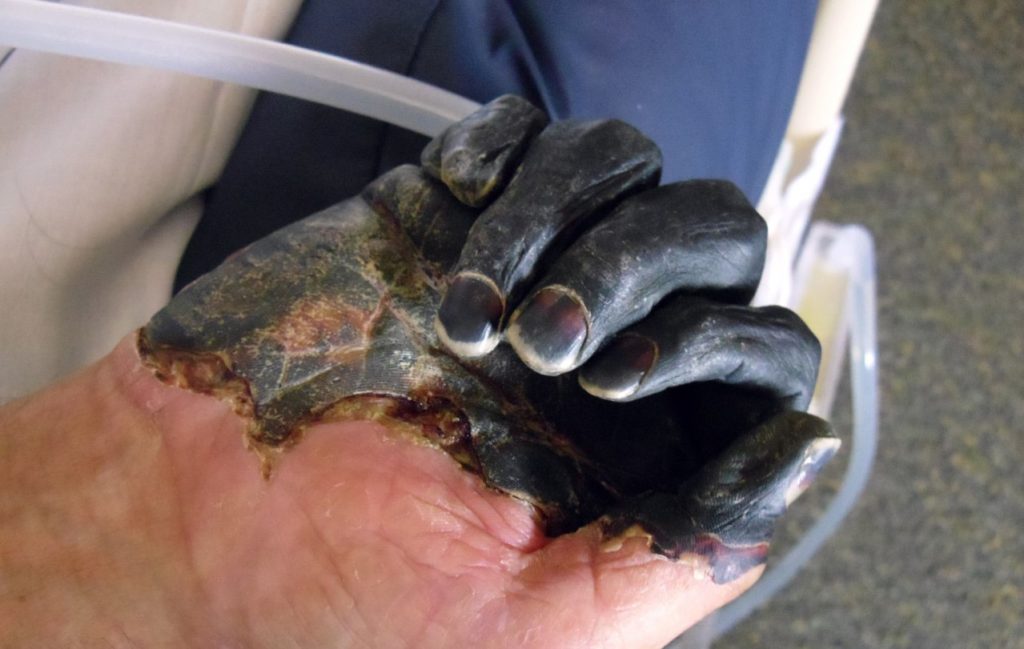The Devastating Story of Bubonic Plague Pandemic: A Past?
In the year of 1346 C.E., one of the most devastating pandemic in human history occurred in Europe, killing 30-60% total of its population—reducing the world’s population from 450 million to 350-375 million in the 14th century. This pandemic is later called the Black Death, due to the existence of dark patch and necrosis (tissues death) in patients. Other symptoms include swollen and painful lymph nodes at the area closest to where the bacteria entered the skin which is known as buboes—thus the term of bubonic plague. The plague disease, which is caused by Yersinia pestis, travelled from the dry land located in the central area of Asia—inside of fleas ‘carried’ by ground rodents such as marmots—and travelled along the Silk Road and to Crimea. By 1343, this disease is believed to be carried by oriental black fleas living on black rats which inhabit merchant ships, spreading to the Mediterranean and Europe.
In the history, there are three known major bubonic plague outbreaks. The first known was the Plague of Justinian (541-542) that afflicted the Eastern Roman (Byzantine) Empire, especially its capital—Constantinople—which is now the capital city of Turkey, Istanbul, the Sassanid Empire, and the port cities around the Mediterranean Sea. The Plague of Justinian caused the death of 25-50 million after two centuries since the beginning of the disease. The second was the Black death and the third was the Third Pandemic which began in the Yunnan province in China in 1855 and spread to all inhabited continents. The last pandemic killed 12 million of the people of China and India, and is known to remained active until 1959 when the worldwide casualties dropped to 200 per year—according to the WHO.
The diseases had eventually died out in some regions, but the reservoir of the diseases established in the Third Pandemic had spread widely and persists in many areas, including the western United States and the central highland of Madagascar. In the year of 1924-1925, an outbreak occurred in the Los Angeles, United States.
The Plague as a Disease
The bacteria that causes the plague, Yersinia pestis, cycles in nature among rodents and their fleas. Many types of animals such as squirrels, chipmunks, mice, and rabbits can be affected by the plague. Wild carnivore can too be infected by eating other infected animals. These infected animals and fleas remains as the long-term reservoir for the bacteria—hence the term enzootic cycle. When other species became infected, outbreaks may occur widely, thus showing its cascades towards epizootic. In this phase, humans are usually more at risk of being infected. Transmission to humans may happen through flea bites, contact with contaminated fluid or tissue, and the inhalation of infectious droplet from person with plague pneumonia.
Sign and symptoms of plague developed through three phase: the bubonic, septicemic and pneumonic plague. First of which is called the (1) bubonic plague—when the bacteria enter the blood and to the lymphatic system. When the bacteria reach the lymph node, it then causes inflammation—making the lymph node to be swollen and form the characteristic of buboes. Overwhelmed lymph nodes would then cause the infection to pass into the bloodstream, which would later be able to disseminate to almost any part of the body, and developed into a (2) septicemic plague; where bacteria release its toxin, and cause the formation of tiny cloth throughout the body, and caused ischemic necrosis (tissue death due to the lack of the circulation of the blood). (3) The pneumonic plague, which arise from the infection of the lungs, may cause coughing, sneezing, and spitting—thus producing airborne droplets which may inhaled by other people. Despite being a serious illness, plague is treatable with common antibiotic and is generally susceptible to aminoglycosides, tetracyclines, and fluoroquinolones.

Today’s Bubonic Plague in Madagascar
When someone inhales the droplet from other pneumonic plague patients, they are at risk in developing primary pneumonic plague—which incubation is very rapid (typically 1 until 4 days) and if left untreated, is nearly always fatal. It should be noted that not many patients are able to transmit the disease to anyone, but in the right time and circumstances, it may infect many people and caused an outbreak. The current pandemic in Madagascar seemed to have been triggered by the same action, where it started when an ill man boarded a share taxi in the central highland of the eastern city of Toamasina to the capital city of Madagascar, Antananarivo and spread the disease. Tragically, he died when in the middle of transit and dozens of people who came to contact with the man subsequently became ill.
According to the WHO, there are 2417 total cases which had been identified between August 1 until November 26 2017. In response of the outbreak, the Government of Madagascar has established a high-level workgroup, directed by the prime minister, to provide strategic direction, while the Ministry of Health focuses on coordinating partnership with other health agencies. Agencies, including the WHO, have been providing support, both technical and operational through Global Health Network. The Institut Pasteur de Madagascar and the International Federation of the Red Cross, Madagascar, along with other NGOs, have been aiding assistance in laboratory testing, surveillance, and patient care. Overall, these efforts have been directed toward active case finding and treatment, thorough-out identification and preventions, rodent and flea control, safe and dignified burials, and departure screening and preparedness to prevent spread to other countries.
References
- Mead PS. Plague in Madagascar—A Tragic Opportunity for Improving Public Health. New England Journal of Medicine. 2017 Dec 20.
- Plague [Internet]. World Health Organization. 2018 [cited 12 January 2018]. Available from: http://www.who.int/mediacentre/factsheets/fs267/en/
- Diagnosis | Plague | CDC [Internet]. Cdc.gov. 2018 [cited 13 January 2018]. Available from: https://www.cdc.gov/plague/diagnosis/index.html
Alessa Fahira
Indonesia One Health University Network
Communication and Networking Team
She quickly realized that she needed research paper writers to make those issues a priority when she took over the 77,000-student district in may.

